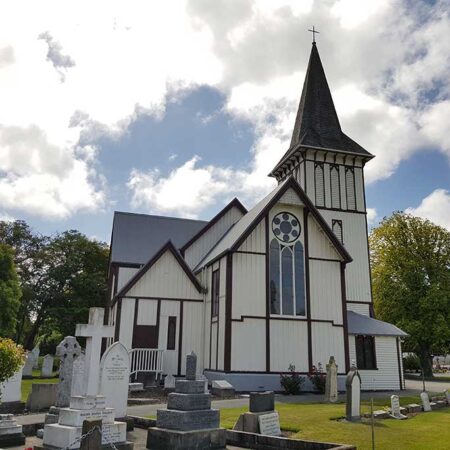At Tūranga, the Christchurch Central Library, there is a digital installation that displays prominent Christchurch landmarks. Visitors can interact with the installation and swipe from area to area, landmark to landmark. When they tap on specific landmarks an information bubble pops up. Included are landmarks such as Cave Rock in Sumner, the Cardboard Cathedral, New Regent Street, the Bridge of Remembrance, the Arts Centre, Riccarton House, Rangi Ruru, Fendalton Village, and the Airport. In the north-west of Christchurch one of the most prominent landmarks displayed is St Paul’s, our church building. It is quite a striking building.
We’ll be participating again in Heritage Week this October to showcase the church as a landmark and as a place that has been so important the lives of so many people. Without doubt the distinctive architecture of the building is one reason it is so noticeable. Then there is the obvious age of the building and its history. In this part of Christchurch there are not many old buildings left any more. The Papanui Railway Station is another old surviving public building and that was built in 1900. The church therefore represents a link to Papanui’s heritage.
Having such a distinctive building has its advantages and its disadvantages. People know we are here; this place is instantly recognized as a church; the bells sound a very noticeable invitation; the beautiful building provides a peace and dignity often not encountered in newer buildings; and the sense of history and continuity is obvious. And yet the noticeable church look may intimidate people; there may be an expectation of old-fashioned traditionalism; the heritage aspect may overshadow a living faith; and the costs of maintaining such a heritage building are all too evident. I think we cannot wish away those disadvantages; we can do something to mitigate them nonetheless.
We also have to weigh them against the advantages, which God can use to bring the good news to people in our community. In a very secular world our building is a clear—maybe even confronting—sign of a different way of living in the world.
May we live accordingly, not dismissive of others, but inviting them in.

